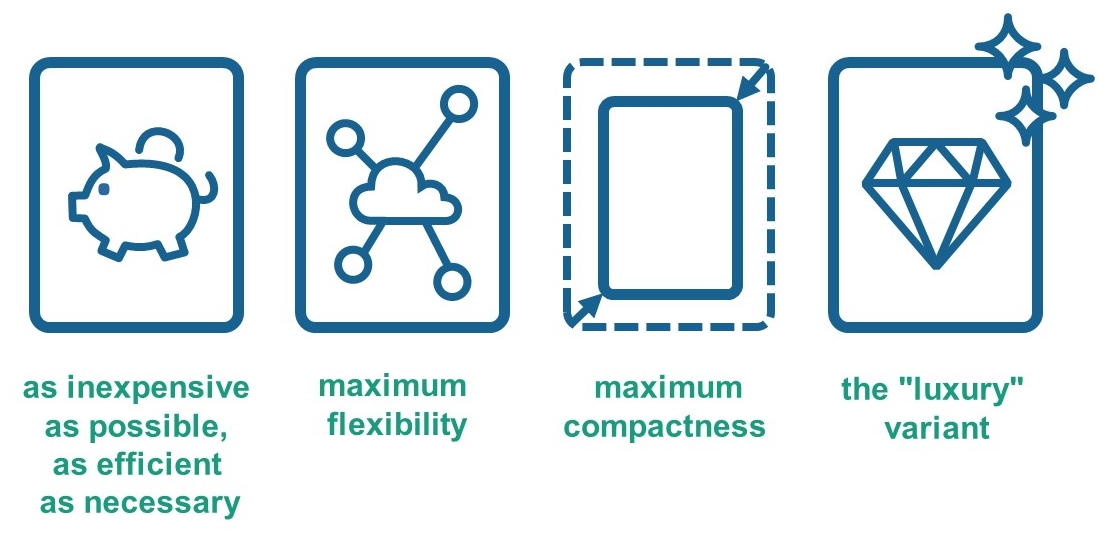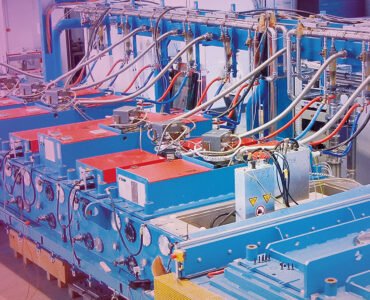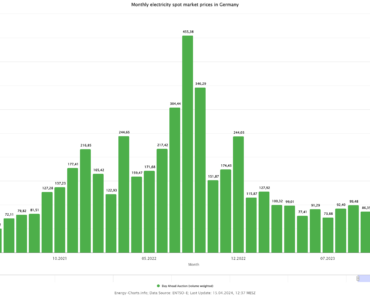Episode 9 of a series on heat pumps in existing buildings
Whether it’s worth waiting any longer to install a heat pump depends on two considerations: Is the technology at today’s level ready for satisfactory use in existing buildings? And: What advantages, if any, can be expected from further technological developments?
The results of our long-term monitoring projects, which were described in earlier episodes of this blog series (episodes 4, 5, 6) and which formed the basis for the positive ecological (episode 7) and economic assessment (episode 8) of heat pumps, are based on the technological status of five to ten years ago. Even then, for example, most air-source heat pumps were equipped with electronic expansion valves, which brought a significant increase in efficiency. Some of the systems examined were already working with inverter technology – this is the standard today. These two examples show the technological progress of recent years.
As it is the case with other mature technical devices, there is a wide range of products on the market today, which differ in price and (often related) efficiency. An analysis of the so-called “BAFA list”, which includes all devices approved for financial subsidy in Germany, shows an enormous range of efficiency values at the same operating point of the heat pumps. For example, for an outdoor temperature of 2°C (the temperature the heat pump has “at its disposal”) and heat sink temperature of 35°C (the temperature the heat pump provides), efficiency values (COP values) of air-to-water heat pumps range from 3.1 to 4.7! This wide range illustrates how much the devices differ already. However, it also shows how high the achievable technical efficiency already is today. The next development step therefore should be to offer these good efficiency values more cost-effectively. This can also be expected with higher quantities as a continuous development.
And finally: The European Heat Pump Association (EHPA) reports almost 15 million installed heat pumps in 21 European countries in 2020, with an additional 1.6 million per year. And the trend is rising sharply. An immature technology would not be able to achieve such sales figures.
Will heat pumps be even more suitable for existing buildings in the future?
The ISH (International Sanitary and Heating Show) in Frankfurt, which took place online a month ago, is a good barometer to identify technical trends in the market. This year the majority of manufacturers presented solutions for existing buildings. Many new products work with climate-friendly refrigerants, also allowing higher temperatures (for example, the natural refrigerant propane). It is therefore no problem to find the right heat pump even for houses that require high heating circuit temperatures.
20-30 years ago, it was all about proving that heat pumps work. About 10 years ago, many still questioned whether the units were sufficiently efficient. Today, with properly designed and installed equipment, this is no longer an issue. It’s less and less about the device and more about proper installation. Today’s structures and processes in the market are not yet geared to installing the necessary volume of heat pumps – at least in Germany, but also in some other countries. Many customers report that it is difficult to get a quote and an installation date at short notice. The clearer the political framework conditions are set here, the more the industry will adapt to the new challenges.
The technical development of heat pumps is currently geared toward different goals, just as the needs and expectations of end customers vary. This is reflected in the work being carried out as part of the international “Annex 55 CCB” project. The four possible directions of development are shown schematically in this diagram.

The first development goal, “as inexpensive as possible, as efficient as necessary,” is a variant suitable for the mass market. It is not characterized by the highest efficiency, but it is attractively priced. The second development direction stands for a maximally flexible heat pump. The focus is on the communication capability of the device. This can include exchange with the external energy system as well as communication within the (smart) building. Another variant is to enable very compact heating technology. In many cases, this can play a decisive role in the purchase decision. And then there is the less specific “luxury” variant. It is likely that this solution will not be based on price or compactness, but on technical sophistication, maximum efficiency, and also design. Certainly, there will be many more variants on the market, each of which will be a mixture of the four basic directions presented.
It therefore becomes clear that, from the customer’s point of view, there is no reason to wait for further technological developments and not install a heat pump now. There are already many different products on the market today, each of which can meet specific requirements. Future heat pump models will probably be quicker and easier to install or will even be able to optimize themselves during operation. But the devices will not be “much better suited” in principle, not even for existing buildings. What’s more, there’s simply no more time to lose if we want to meet the international climate targets.
The next episode of the series will address the topic of hybrid systems. Is it worth combining a heat pump with a gas boiler?
Further reading:
Overview on the range of applications for heat pumps.
Episode 8 of this series: Isn’t heating with heat pumps too expensive?
Episode 7 of this series: How ecological are heat pumps in existing buildings?
Header picture: House with brine-to-water heat pump. Reference building of Bundesverband Wärmepumpe (BWP) e.V. © BWP.
This blog post is financially supported by the Climate Neutrality Foundation.









Add comment